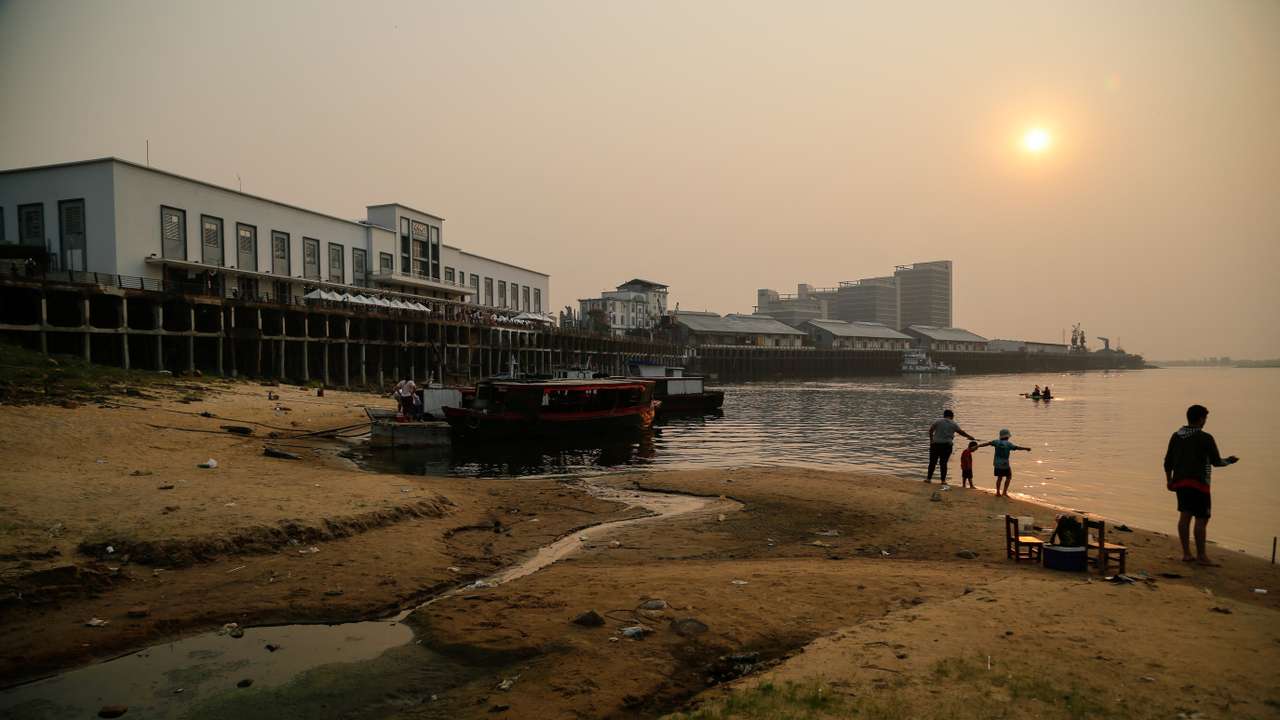South America's rivers hit record lows as Brazil drought impact spreads

South America's rivers hit record lows as Brazil drought impact spreads
By Daniela Desantis and Lucinda Elliott
South America's Paraguay River, a key thoroughfare for grains, has hit a record low in Paraguay's capital Asuncion, with water levels depleted by a severe drought upriver in Brazil that has hindered navigation along waterways in the Amazon.
The depth of the Paraguay River, measured versus a "zero" index rather than the riverbed, has dropped below minus 0.82 meter, breaking the previous record low in October 2021, data from the national Meteorology and Hydrology Directorate shows. The body expects the river will keep falling with no rain forecast.
The Parana River in Argentina is also near year lows around grains hub Rosario. Both the Paraguay and Parana rivers start in Brazil, eventually joining and flowing into the sea near Buenos Aires. They are important routes for soy, corn and other trade.
"In the northern section (of the Paraguay waterway), navigation is practically halted due to the extreme drop in water levels," the Paraguayan oilseed and grain crushing chamber CAPPRO told Reuters in written comments.
The chamber, whose grain-trader members handle some 60% of Paraguay's soybean exports, said the low river was hitting shipments, though the impact was capped as it was not peak trading season.
"Vessels have had to transport volumes below the average of their normal cargo capacity," said CAPPRO. "This has generated delays and made travel times longer." The chamber's members include ADM, Bunge and Cargill.
EXPECTED RAINS NOT ENOUGH
The Paraguay-Parana system is a waterway of more than 3,400 kilometers (2,113 miles) that runs through Argentina, Brazil, Uruguay, as well as landlocked Paraguay and Bolivia.
Paraguay is the world's No. 3 soybean exporter and roughly 80% of grains travel along waterways to seaports downriver. Argentina is the top exporter of processed soy, most of which goes down the Parana from around river port city Rosario.
Paraguay's deputy director for the Meteorology and Hydrology Directorate, Jorge Sanchez, said the outlook for river levels in the coming months was not encouraging, even with the traditional October-November rainy season ahead.
"This would alleviate the level of the river, but it's not expected to be enough," Sanchez said.
Less rain than normal is expected in the second half of the year due to the La Nina weather phenomenon, which brings drier, cooler conditions in Paraguay and Argentina, though it usually heralds wetter weather farther north in Brazil.
Sanchez said this year, however, La Nina was delayed and its effects would be seen only between October and November. "There is a lot of variability due to climate change," he added.
In Brazil, where record wildfires have also occurred, the low water levels are leaving some communities in the Amazon isolated, as well as hitting soy and corn shipments in center-west states such as Mato Grosso, Brazil's number one grains growing area.
This article was produced by Reuters news agency. It has not been edited by Global South World.